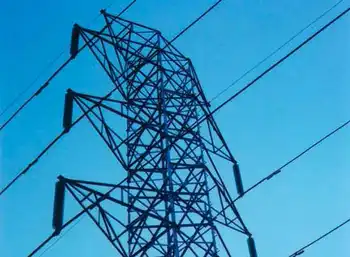Indian Point Is Criticized for Shutdowns
- The Indian Point nuclear plant had three times as many unplanned shutdowns in a 12-month period as any other plant in the nation, an official of the Nuclear Regulatory Commission said recently.
The agency said in a report released a day before that a failure to follow protocol, insufficient quality control and poor contractor oversight contributed to the shutdowns at the plant in Buchanan, N.Y.
The report, which was first reported by The Journal News, was initiated after the plant's reactors — Indian Point 2 and 3 — experienced a combined total of eight unplanned shutdowns in a period of a year and a half, a spokesman for the regulatory commission said. The national average for shutdowns at a power plant is 0.64 per year, he said.
The Indian Point plant, in northern Westchester County on the Hudson River, has been a focus of concern since the terror attacks of Sept. 11, 2001. It was later discovered that one of the hijacked planes had flown close to the plant on its way to the World Trade Center.
The 47-page report, which examined shutdowns from late December 2001 to August 2003, says diesel generators in offices at the plant failed during the blackout of Aug. 14, forcing technical support and emergency response crews to relocate and use contingency plans. Both systems were previously identified as problematic but were never repaired, the report said.
"The failure affected their emergency response facilities, but in a real-world scenario, there was no safety implication to that," said Neil A. Sheehan, the spokesman for the regulatory commission.
The report, completed Oct. 24 after a one-month inspection, identifies six problems at the plant, including poor preventive maintenance and failure to follow emergency procedures and proper protocol in response to unplanned shutdowns.
In one case, poor protocol during a shutdown resulted in improper handling of pressure levels in the reactor coolant system, the report said. Each of the findings was categorized by the commission as posing the lowest safety risk in its four-tier category. Entergy Corporation, the New Orleans company that owns Indian Point, has 30 days to issue a response to the report, Mr. Sheehan said.
James Steets, a spokesman for Entergy, said the company plans to improve oversight of its contractors, many of whom supplement its 1,500 employees by working in such areas as high-voltage electricity repair and maintenance. He said that the long inspection and ensuing report found what he called relatively minor problems. "They really found very little," Mr. Steets said. He added that the areas cited in the report either have been addressed or are being addressed. "We're not where we want to be, but we're working toward that," he said.
But at least one environmental group said the report was one more piece of evidence that should lead to the shutting down of the plant. Kyle Rabin, a senior policy analyst for Riverkeeper, the Hudson River watchdog group, criticized both Entergy and the Nuclear Regulatory Commission for minimizing the significance of the report's findings, which he said illustrate serious safety issues at the plant.
"This is just more ammunition for elected officials representing the public in this region to call for the closing of Indian Point," he said.
Mr. Rabin said the disclosure that the backup generators had failed on Aug. 14 contradicted a statement released by Entergy that said generators at the plant had been operational. Mr. Steets said recently that the statement referred to the emergency diesel generators used for the reactors, not in offices.
One longstanding problem at Indian Point is the switch yard, an electrical substation operated by Con Edison, where power is transmitted from the plant to the power grid, the report said. Entergy has "failed to take appropriate and timely corrective actions to avoid grid-related reactor trips," the report said. At least half of the unplanned shutdowns can be attributed to the switch yard or off-site electrical problems like the blackout, Mr. Steets said.
"More strides should have been made by now," Mr. Sheehan said. The Nuclear Regulatory Commission will conduct an annual inspection of Indian Point next spring.
The plants at Indian Point, 2 of 103 operating reactors at 68 sites in the nation, produce enough energy to power two million homes, Mr. Steets said. There are three reactors, but Indian Point 1 has been shut down since the 1970's. Indian Point 2 and 3 are licensed to operate for the next decade and are eligible to apply for license renewal, Mr. Sheehan said.
Related News

Electric Utilities Plot Bullish Course for EV Charging Infrastructure
WASHINGTON - Electric providers in Florida, Ohio and New Jersey recently announced plans to expand electric vehicle charging infrastructure through various incentive programs that could add thousands of new public chargers in the next several years.
American Electric Power in Ohio will offer nearly $10 million in incentives toward the build out of 375 EV charging stations throughout the company's service territory, which largely includes Columbus.
Meanwhile, the Public Service Electric and Gas Company (PSE&G), an electric utility provider in New Jersey, has proposed a six-year plan to support the development of nearly 40,000 electric vehicle chargers across a wide range of…




